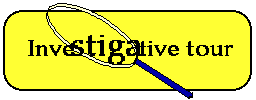Making a mathematical oval
How can we construct an ovular figure in a way that allows us to define it carefully with mathematics?
It makes sense to start with a circle and try to stretch it somehow.
Where do we see circles in our everyday experience? Often they are at the ends of cylinders, like pop cans or coins or cardboard tubes.
Or drinking glasses. If we tip a drinking glass to drink, the surface of the liquid forms an oval. As the glass tips more and more, the oval stays the same width (the diameter of the glass) but stretches into a longer and longer oval.

How can we describe mathematically what's happening with the drinking glass? The surface of the liquid is along a plane. When the glass is upright, that plane is intersecting the cylinder parallel to the base of the glass, and its intersection is a circle. As the glass tips, the plane is intersecting the cylinder in a way that's not perpendicular to the side of the cylinder.
If the drinking glass could tip to the point of being horizontal without the liquid escaping, the surface of the liquid wouldn't form an oval any more; it would be rectangular. The intersection with the sides of the glass would be two straight lines. So we have to be a little careful in our definitions.
Let's call the oval generated this way an ellipse. That is,
In particular, if the plane is perpendicular to the axis of the cylinder,
the intersection is an oval. But the intersection of such a plane with the
cylinder is a circle. So a circle is a special case of an ellipse.











